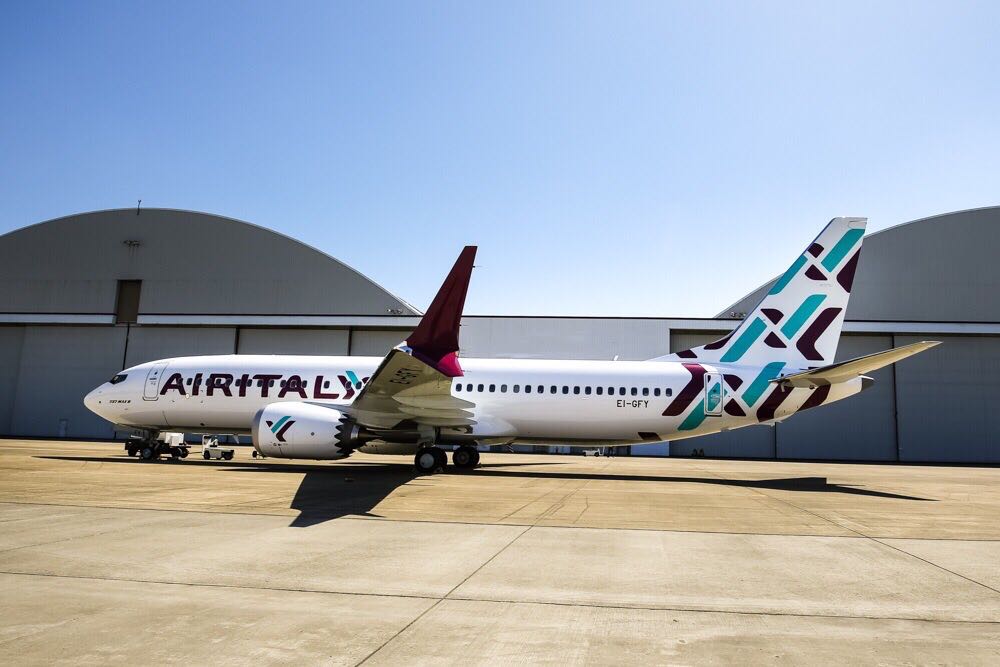
Yesterday, the chief executive of Qatar Airways, Akbar Al Baker was present at the delivery ceremony of Air Italy’s brand new Boeing 737MAX 8 aircraft at the Boeing delivery center in Everett, near Seattle, Washington. The fact that Baker decided to attend the event has not been lost on commentators who believe it just goes to show how importantly Qatar Airways see’s it latest European investment.
Last December, the Doha-based airline announced it had bought a 49% stake in little known Italian airline, Meridiana. Along with the investment came a major rebrand – resurrecting the Air Italy brand which Meridiana owned by had previously retired. The airline would see a big shift in its business strategy – supported by a huge financial investment from Qatar Airways.
By 2022, Air Italy is expected to have added 50 new aircraft to its fleet – The first of 20 brand new Boeing 737 Max aircraft was delivered yesterday and during the course of this year, Qatar Airways is expected to loan 5 Airbus A330-200 long-haul aircraft to the airline.
Air Italy will shift its focus to Milan Malpensa – the company hasn’t been shy in admitting that it hopes to tap into what is a wealthy but underserved market (after Alitalia diverted its attention to Rome). The first 737MAX will be used on domestic flights from Milan to Taormina in Sicily, Sardinia, Rome, Sorrento and Capri. Air Italy’s long-haul network is expected to expand soon.
Much has been said of Air Italy’s commitment to being a truly Italian airline. Chairman of Alisarda (the parent company of Air Italy), Marco Rigotti said passengers would “sense the beauty of Italy” when flying with the rebranded airline.

But even casual observers can’t help but notice the hand of Qatar Airways in the new-look Air Italy. The airline sports a livery featuring a deep burgundy colour – both the brand colour of Qatar Airways and the Persian Gulf country’s national colour. Even inside, the seats come in either burgundy or another Qatar Airways favourite – deep grey.
Even the uniforms worn by cabin crew and ground staff are exactly the same as those worn by Qatar Airways staff – save for a different logo and neck scarf.
With such heavy involvement and the symbolic cross-branding from Qatar Airways, you might expect Air Italy’s aircraft to be specced up to a high standard. For example, you might think they would have installed seatback IFE or perhaps comfortable recliner style seats for Business Class passengers. Some of Qatar’s narrowbody A320 family aircraft even come with fully-flat premium seats.
It’s a stark contrast from the product offered by European airlines on short-haul flights across the continent – where you’ll typically find an all economy layout with the just the middle seat blocked out for Business Class passengers. It’s becoming increasingly rare for ‘Eurobiz’ seats to even offer any more pitch than their Economy Class counterparts.
In response to a question from the media at the unveiling ceremony, Baker said Air Italy would offer “a premium product on a full-service airline.”
Yet, passengers expecting Air Italy to buck the trend of every other European airline might be sorely disappointed. The airline won’t, in fact, be offering a dedicated Business Class cabin – instead, Air Italy has chosen to go down the same route of blocking off the middle seat. None of the seats will be equipped with individual IFE.

One slight improvement is the seat pitch – around 33 inches for Business and 30 inches for Economy. The average for competitors is just 30 inches for both classes.
Instead, Air Italy says it will differentiate itself through the service it offers. With complimentary food and drinks offered in Business Class for even the shortest of domestic flights. There’s still no word on whether Economy passengers will be expected to pay for food and drink.
Of course, there’s little reason to offer a better standard of product. Competition in Europe is fierce and consumers, especially in Italy, have voted with their wallets – placing value over luxury.
Legacy airlines have, to a certain extent, been forced to copy their low-cost counterparts. Thr blocked middle seat approach is designed to benefit the airline in all conditions – on premium passenger heavy routes they can push the movable curtain further down the cabin and charge a higher fare. The principle works equally well in reverse.
Even Qatar Airways would appear to realise this is a market where offering a better hard product won’t result in business sucess.
Related
Mateusz Maszczynski honed his skills as an international flight attendant at the most prominent airline in the Middle East and has been flying ever since... most recently for a well known European airline. Matt is passionate about the aviation industry and has become an expert in passenger experience and human-centric stories. Always keeping an ear close to the ground, Matt's industry insights, analysis and news coverage is frequently relied upon by some of the biggest names in journalism.







